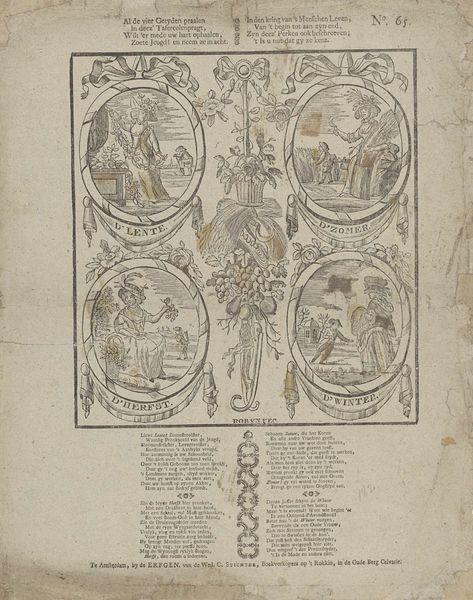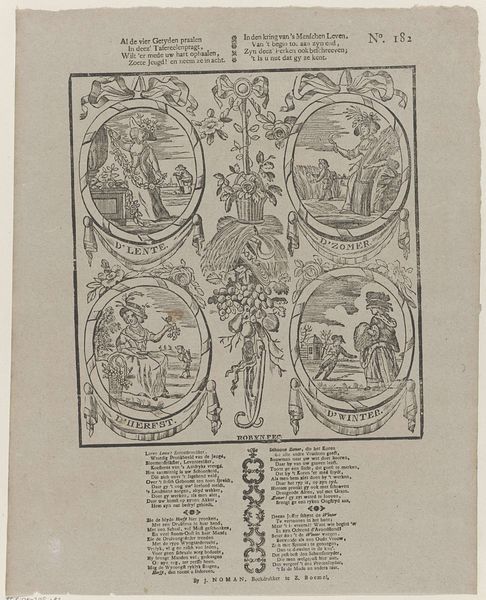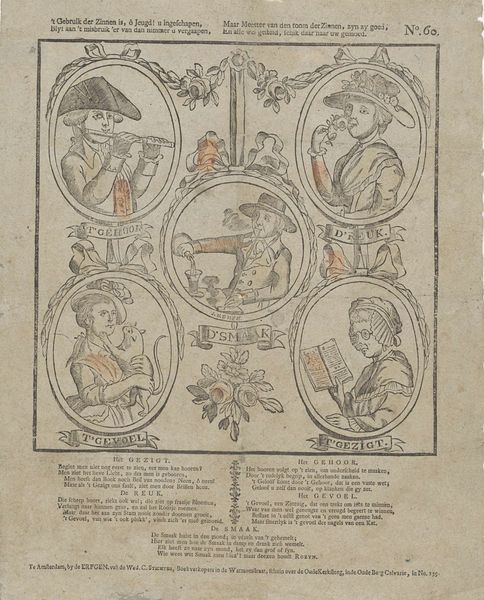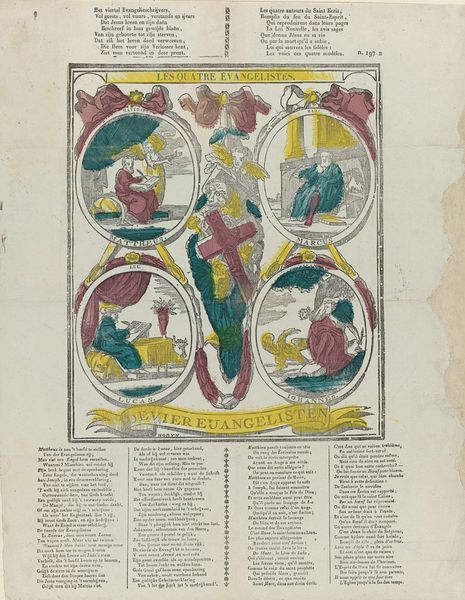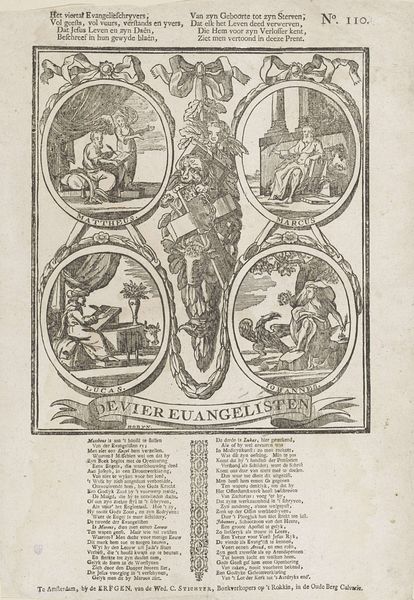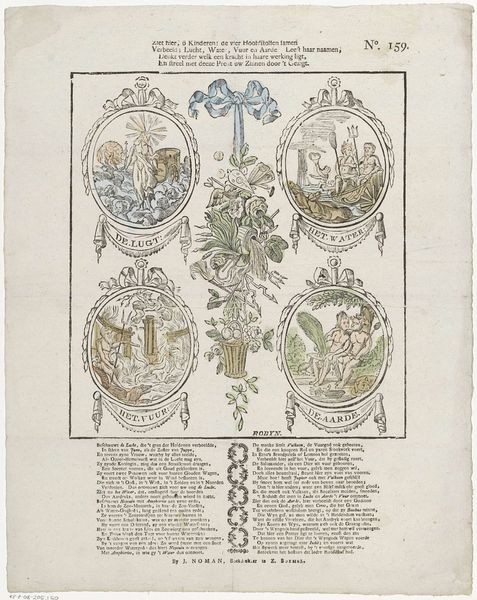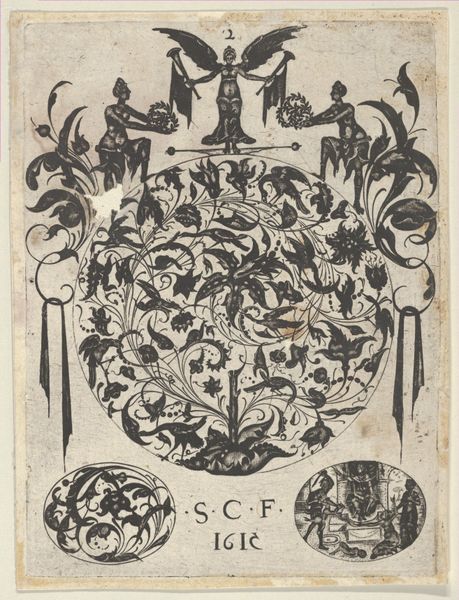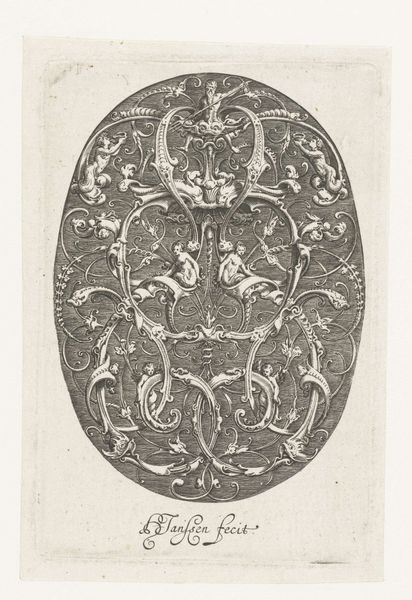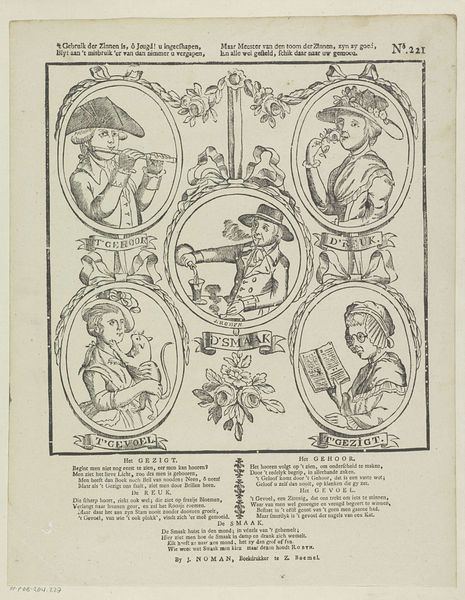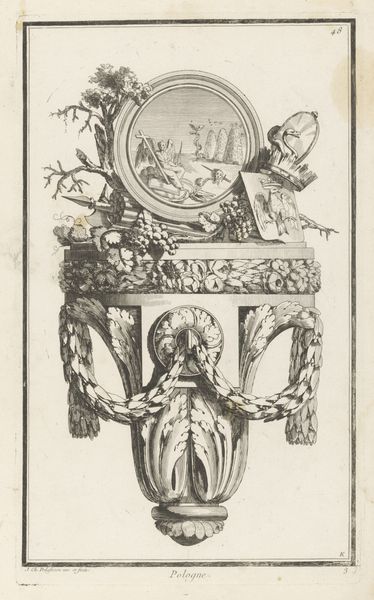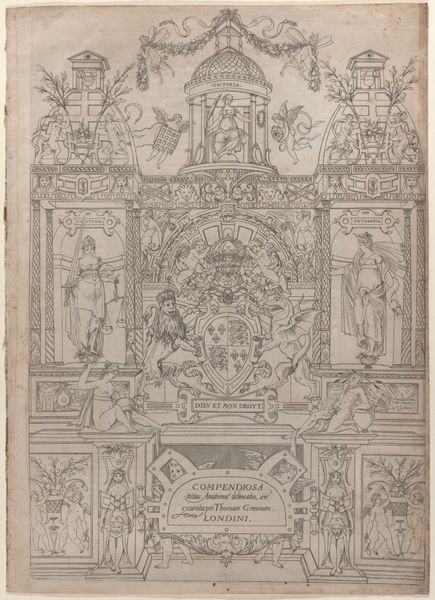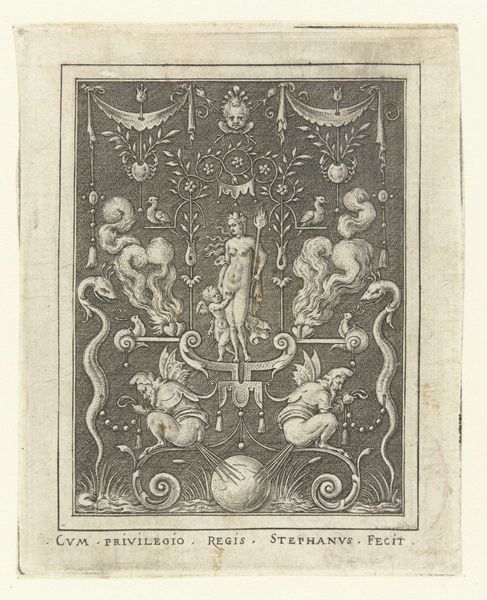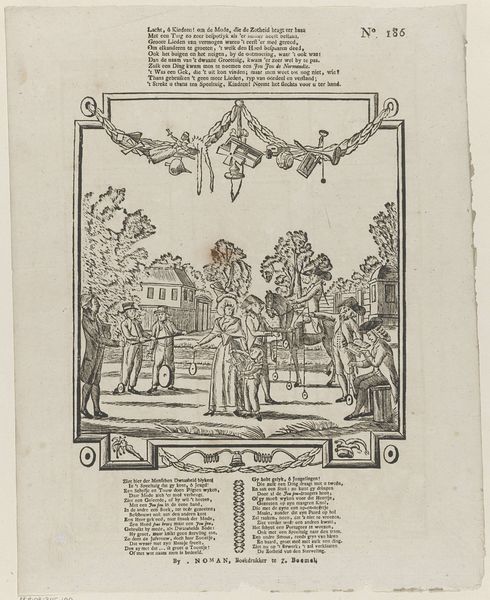![Al de vier getyden pralen / In deez' tafreelenpragt [(...)] by J. Robyn](/_next/image?url=https%3A%2F%2Fd2w8kbdekdi1gv.cloudfront.net%2FeyJidWNrZXQiOiAiYXJ0ZXJhLWltYWdlcy1idWNrZXQiLCAia2V5IjogImFydHdvcmtzLzI3ZjI2NDk1LWQ5OTgtNGY4My1hYzEwLTRhODU1NGE4NDVmNC8yN2YyNjQ5NS1kOTk4LTRmODMtYWMxMC00YTg1NTRhODQ1ZjRfZnVsbC5qcGciLCAiZWRpdHMiOiB7InJlc2l6ZSI6IHsid2lkdGgiOiAxOTIwLCAiaGVpZ2h0IjogMTkyMCwgImZpdCI6ICJpbnNpZGUifX19&w=3840&q=75)
#
aged paper
#
narrative-art
# print
#
landscape
#
sketchbook drawing
#
genre-painting
Dimensions: height 396 mm, width 333 mm
Copyright: Rijks Museum: Open Domain
Curator: This engaging print from the Rijksmuseum, dating from between 1806 and 1830, is entitled "Al de vier getyden pralen / In deez' tafreelenpragt." Editor: It strikes me as rather charmingly naive. The arrangement, the delicate coloring… It all feels a bit…unsophisticated, in a way. Curator: Indeed. The four seasons are represented within these decorated ovals. The iconographic weight each carries speaks volumes about the Dutch relationship with their landscape and its cyclical nature. Spring, or "D’Lente", with its imagery of growth and new beginnings... Editor: Framed with blossoming flora! And consider the compositional mirroring in the vignettes – figures consistently turned inwards, subtly echoing the passage of time from left to right and top to bottom. Curator: Exactly. And summer, “D’Zomer,” embodies abundance, typically portrayed by ripened harvests. Note that woman holding the sheaf of wheat. This signifies prosperity and the culmination of labor, linking her image back to Ceres and to cycles of human life. Editor: Yes, though technically a formal rendering, the perspective isn't exactly convincing. The flatness almost heightens the symbolic element, forcing the viewer to grapple with these figures as archetypes instead of portraits of observable individuals. Curator: Then we transition into autumn, or “D’Herfst,” the season of change and shedding. It hints at mortality. The fruitful harvest is reaped as a premonition of winter’s coming freeze. Editor: And, of course, the concluding image, the depiction of winter or "D'Winter". We’re shown cold tones, stark outlines...there is clearly a feeling of quiet repose but simultaneously a fear of barrenness that the other seasons hold no evidence of. Curator: It's more than just a depiction; it's an allegory of human existence. These pictorial traditions link directly to folklore and longstanding seasonal festivals, all contained in the framework of cultural understanding. Editor: Precisely. When dissected, each season represents more than what immediately meets the eye: a structured analysis shows its function is less representational accuracy and more something along the lines of the encoding of specific social messages. Curator: Ultimately, this print speaks of time's passage, and how we continuously interact with nature’s cycles, and each season embodies culturally-informed expectations. Editor: Yes. The beauty lies in the tension, I think, between surface naivety and its hidden sophistication; an enduring message subtly layered behind form.
Comments
No comments
Be the first to comment and join the conversation on the ultimate creative platform.
